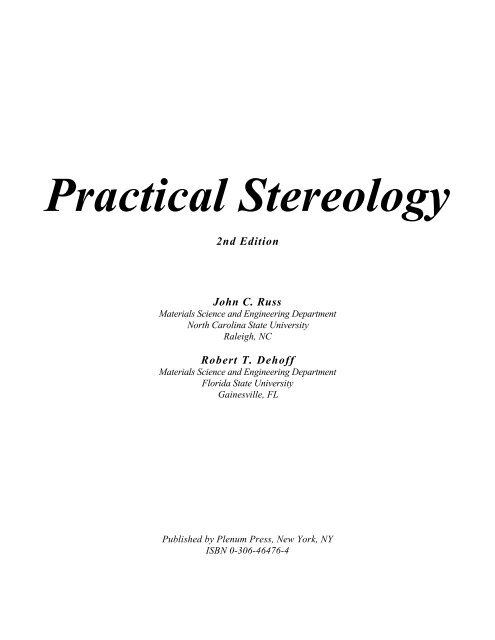
Continued advances in textile processing technology, the growth of manufactured nonwovens and the application of nanotechnology have resulted in a wealth of research in order to characterise the behaviour of these materials. The transfer of heat and moisture through textiles is vital to the manufacture and design of clothing, technical and protective textiles. Thermal And Moisture Transport In Fibrous Materials Author : The scope of applications includes work in materials science and engineering, geophysics, geology, chemistry and pharmaceutical science. The method is presented from a mathematical/crystallographic point-of-view but with sufficient hands-on details to enable the reader to plan his or her own experiments. The book gives a comprehensive account of the methodology followed by a summary of selected applications. Furthermore, the dynamics of the individual structural elements can be monitored during typical processes such as deformation or annealing. The position, morphology, phase, strain and crystallographic orientation of hundreds of grains or sub-grain embedded within mm-cm thick specimens can be determined simultaneously. Three-dimensional x-ray diffraction (3DXRD) microscopy is a novel experimental method for structural characterisation of polycrystalline materials.

Three Dimensional X Ray Diffraction Microscopy Author : Provides new chapters on digital pathology, juvenile pathology, in vitro/in vivo correlation, big data technologies and in-depth discussion of timely topics in the area of toxicologic pathology Offers high-quality and trusted content in a multi-contributed work written by leading international authorities in all areas of toxicologic pathology Features hundreds of full-color images in both the print and electronic versions of the book to highlight difficult concepts with clear illustrations Completely revised with a number of new chapters, Volume 1 of the Handbook of Toxicologic Pathology is an essential part of the most authoritative reference on toxicologic pathology for pathologists, toxicologists, research scientists, and regulators studying and making decisions on drugs, biologics, medical devices, and other chemicals, including agrochemicals and environmental contaminants. Volume 1 of the Fourth Edition covers the practice of toxicologic pathology in three parts: Principles of Toxicologic Pathology, Methods in Toxicologic Pathology, and the Practice of Toxicologic Pathology. Haschek and Rousseaux's Handbook of Toxicologic Pathology: Volume 1: Principles and Practice of Toxicologic Pathology is a key reference on the integration of structure and functional changes in tissues associated with the response to pharmaceuticals, chemicals and biologics. Haschek And Rousseaux S Handbook Of Toxicologic Pathology Author :

PRACTICAL STEREOLOGY MANUAL
Russ Raleigh,NC July, 1986 Chapter 1: Statistics 1 Accuracy and precision 1 The mean and standard deviation 5 Distributions 7 Comparison 13 Correlation 18 Nonlinear fitting 19 Chapter 2: Image Types 23 Planar sections 23 Projected images 25 Finite sections 28 Space-filling structures and dispersed phases 29 Types of images and contrast mechanisms 31 Sampling 32 Chapter 3: Manual Methods 35 Volume fraction 35 Surface density 38 Contiguity 41 Mean intercept length 42 Line density 43 Grain size determination 55 Curvature 48 Reticles to aid counting 49 Magnification and units 51 Chapter4: Size Distributions 53 Intercept length in spheres 53 Nonspherical shapes 57 Corrections for finite section thickness 59 Lamellae 61 Measurement of profile size 62 Nonspherical particles 69 vii Contents viii Chapter 5: Computer Metlwds 73

I am indebted to Tom Hare for critical reviews of the material and an endless enthusiasm to debate and derive stereological relationships to John Matzka at Plenum Press for patiently instructing me in the intricacies of typesetting to Chris Russ for helping to program many of these measurement techniques and especially to Helen Adams, both for her patience with my creative fever to write yet another book, and for pointing out that the title, which I had intended to contrast to "theoretical stereology," can also be understood as the antonym of "impractical stereology." John C. Vi on geometric probability is included, students can be expected to create a few simple programs like those shown, but for other geometries.


 0 kommentar(er)
0 kommentar(er)
